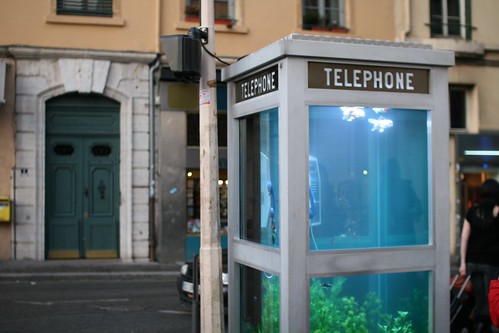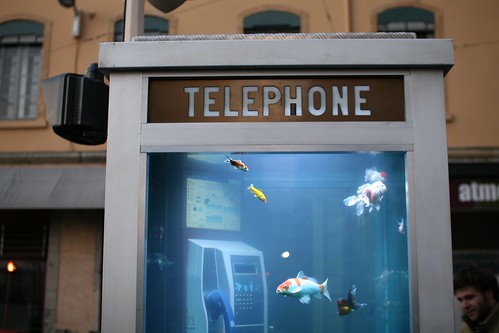It's been 6 months or so that I am working at the Media and Design Lab, a structure led by Jef Huang that sits both in architecture and computer sciences faculties. My motivation to join this lab, as a researcher, was both to work on architecture/urban projects and to learn more about design thinking.
My background being mixed up (undergraduate degree in cognitive sciences/psychology, MSc in human-computer interaction in a psychology a faculty, PhD in human-computer interaction in a computer science faculty) I quite like discovering new territories, epistemologies, methodologies and purposes. Therefore, discovering and working with architects and designers (other than game designers with whom I work for 7 years now) is very worthwhile and relevant. Given my interest in "user experience" research (or behavioral studies/psychologie ergonomique/...), it's important to live with people who create, design, build and think technologies or services, especially in domains that I am interested in (urban computing , mobile applications, tangible interfaces, games).
Speaking about projects, the lab is a bit scattered as each of us have his or her own project but there are some common ones that involves everyone and most of the time we're required to give feedback on each others' work (be it about teaching or research). It's especially during those moments that I feel how we can learn the richness of multidisciplinary design work.
 (Picture of a lab meeting)
(Picture of a lab meeting)
Over time, I tried to take notes of the elements that I found interesting and that seems to be referred to as "design thinking". Coming from more structured research traditions (HCI, psychology and social sciences), it's pertinent for me to see the differences as well as the idiosyncrasies of that group work. Reading this made me think that I should post about it. So here are some of the elements I spotted a interesting [if you're from the design community, you might find that a bit dumb]:
The first thing that is striking when you come from more monolithic-science department is the use of artifacts during the project process. I won't enter into much detail about it (rather read "Sketching User Experiences" by Bill Buxton) but it's important to notice how artifacts such as posters, sketches, drawings, cardboard stuff are not an end but a way to convey and discuss ideas. See for example the huge posters below that we used for a project, it was mostly to discuss the evolution of interface design. Over time, there has been at least 8 iterations of different visualizations, all supporting the arguments. Hence the gathering of artifacts in sourcebook that can be reused afterwards as inspiration.

The corollary of this is the importance of prototyping and hence the presence of fascinating material all over the place (not that different from computer sciences department though):

Of course, this does not mean that the end product/report does not also benefit from this... there is comparison between reports/presentations that I have seen in some academic psychology/HCI contexts and what is in that community.
Another side issue is the importance of the design critique in the process, which is quite surprising you're thrown in the arena, having to criticize architectural projects you have no clue about how to articulate the validity. Over time, you grow and habit and learn what elements can be criticized, especially about how the design process has been achieved, what has been done from the starting point and whether there are flaws in the reasoning/building of the artifact.
Something that keeps surprising me about this is both the "tabula rasa" attitude in which, at the end of the day, the ideas and artifacts are stored somewhere and the next day starts with new ideas. I don't mean here it's a constant attitude but I noticed the tendency of architects to do so (without reinventing the wheel afterwards). This is linked to the design thinking/process that is very different from what scientific research in the sense that it's much more creative and based on defining different vectors, evaluating their pertinence, exploring others in a less incremental way than engineering or scientific research.
In sum, I am happy to see that and how I can adjust my own research to this. Of course, this is just after 6 months there but I really have pleasure to discover all of this and to compare it to other settings. And not only to scientific research, my biggest surprise (in retrospect) is to notice how video game design suffers from the lack of design thinking, how they're definitely closer to the engineering way of thinking (problem/technological solution) and that there is a whole set of things to apply there. This is not astonishing as the work I am doing for certain video game companies for few years is spot on this (user-centered design, ethnography, foresight).
As a side note, what I wrote here mostly emerges from my academic work. Foresight and research work don with Julian at the Near Future Laboratory explores that area in different ways.



 (Picture of a lab meeting)
(Picture of a lab meeting)




 (Picture from the Bitman project by Ryota Kuwakubo)
(Picture from the Bitman project by Ryota Kuwakubo)


 (picture courtesy of
(picture courtesy of